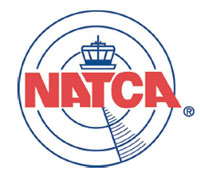Wed, Aug 03, 2011
Controllers Allowed Back Into Cockpits As Part Of Voluntary
Training Program
 The FAA announced that, effective Monday, air
traffic controllers will once again be able to ride in aircraft
cockpits with commercial pilots as part of a voluntary education
program. The Flight Deck Training program is designed to improve
safety by giving air traffic controllers a greater understanding of
the pilots’ experience and workload in the cockpit.
“We’ve worked together to create a credible and secure
flight training program that will enhance safety through increased
education,” said Transportation Secretary Ray LaHood.
The FAA announced that, effective Monday, air
traffic controllers will once again be able to ride in aircraft
cockpits with commercial pilots as part of a voluntary education
program. The Flight Deck Training program is designed to improve
safety by giving air traffic controllers a greater understanding of
the pilots’ experience and workload in the cockpit.
“We’ve worked together to create a credible and secure
flight training program that will enhance safety through increased
education,” said Transportation Secretary Ray LaHood.
“This program gives our new generation of air traffic
controllers a chance to see and hear what the pilot is experiencing
so they know exactly what is happening on the other end of the
microphone,” said FAA Administrator Randy Babbitt. “As
a pilot, I think this important training will give controllers a
richer picture of the airspace system.”
The Flight Deck Training program replaces a previous program
called Familiarization Training, or FAM trip, which was suspended
in 2001. The FAA worked closely with the Transportation Security
Administration and the National Air Traffic Controllers Association
(NATCA) to develop the new program. Because it is designed to
enhance the controller’s understanding of the air traffic
system and specifically how air traffic specialists interact with
the flight deck crew, controllers will always be on duty during
training and cannot take the training in conjunction with any
leave. Controllers will be limited to two training trips in a
calendar year instead of the eight that were permitted under a FAM
trip, and controllers will not be allowed to fly to the same
airport on consecutive flights. A controller must have advance
approval to participate and must also submit an itinerary, as well
as medical and security information. Foreign travel is not
permitted.
 Once approved, the controller must present
unique identification to access the cockpit. During the flight, the
controller must complete pre-approved training objectives as he or
she observes the flight crew. Examples include aircraft preparation
procedures prior to the flight, taxi instructions and procedures,
departure delays and ground stops, types of approaches, enroute
weather and flow constraints.
Once approved, the controller must present
unique identification to access the cockpit. During the flight, the
controller must complete pre-approved training objectives as he or
she observes the flight crew. Examples include aircraft preparation
procedures prior to the flight, taxi instructions and procedures,
departure delays and ground stops, types of approaches, enroute
weather and flow constraints.
Flight Deck Training is being introduced as a pilot program that
the FAA will evaluate and monitor over the next six months.
More News
We're Everywhere... Thanks To You! Even with the vast resources and incredibly far-reaching scope of the Aero-News Network, every now and then a story that should be reported on sl>[...]
From 2015 (YouTube Version): Oshkosh Reveals Many Treasures... Including Old Warbirds Full Of History While at EAA AirVenture 2015, ANN News Editor, Tom Patton, ventured out to vis>[...]
"The aircraft achieved the maximum recorded airspeed of 180 Knots IAS at about 08:08:42 UTC and immediately thereafter, the Engine 1 and Engine 2 fuel cutoff switches transitioned >[...]
Temporary Flight Restriction (TFR) A TFR is a regulatory action issued by the FAA via the U.S. NOTAM System, under the authority of United States Code, Title 49. TFRs are issued wi>[...]
Aero Linx: Aviation Without Borders Aviation Without Borders, a leading humanitarian aviation charity, uses its aviation expertise, contacts and partnerships to enable support for >[...]
 ANN FAQ: How Do I Become A News Spy?
ANN FAQ: How Do I Become A News Spy? Classic Aero-TV: The PB4Y-2 Privateer - A Priceless Aero-Treasure
Classic Aero-TV: The PB4Y-2 Privateer - A Priceless Aero-Treasure Aero-News: Quote of the Day (07.14.25)
Aero-News: Quote of the Day (07.14.25) ANN's Daily Aero-Term (07.14.25): Temporary Flight Restriction (TFR)
ANN's Daily Aero-Term (07.14.25): Temporary Flight Restriction (TFR) ANN's Daily Aero-Linx (07.14.25)
ANN's Daily Aero-Linx (07.14.25)




